Each year the Southern Utah Home Builders Association presents the St. George Parade of Homes...an extravaganza of custom homes and interior design ideas. Here are some of our favorite images from this year's Parade.


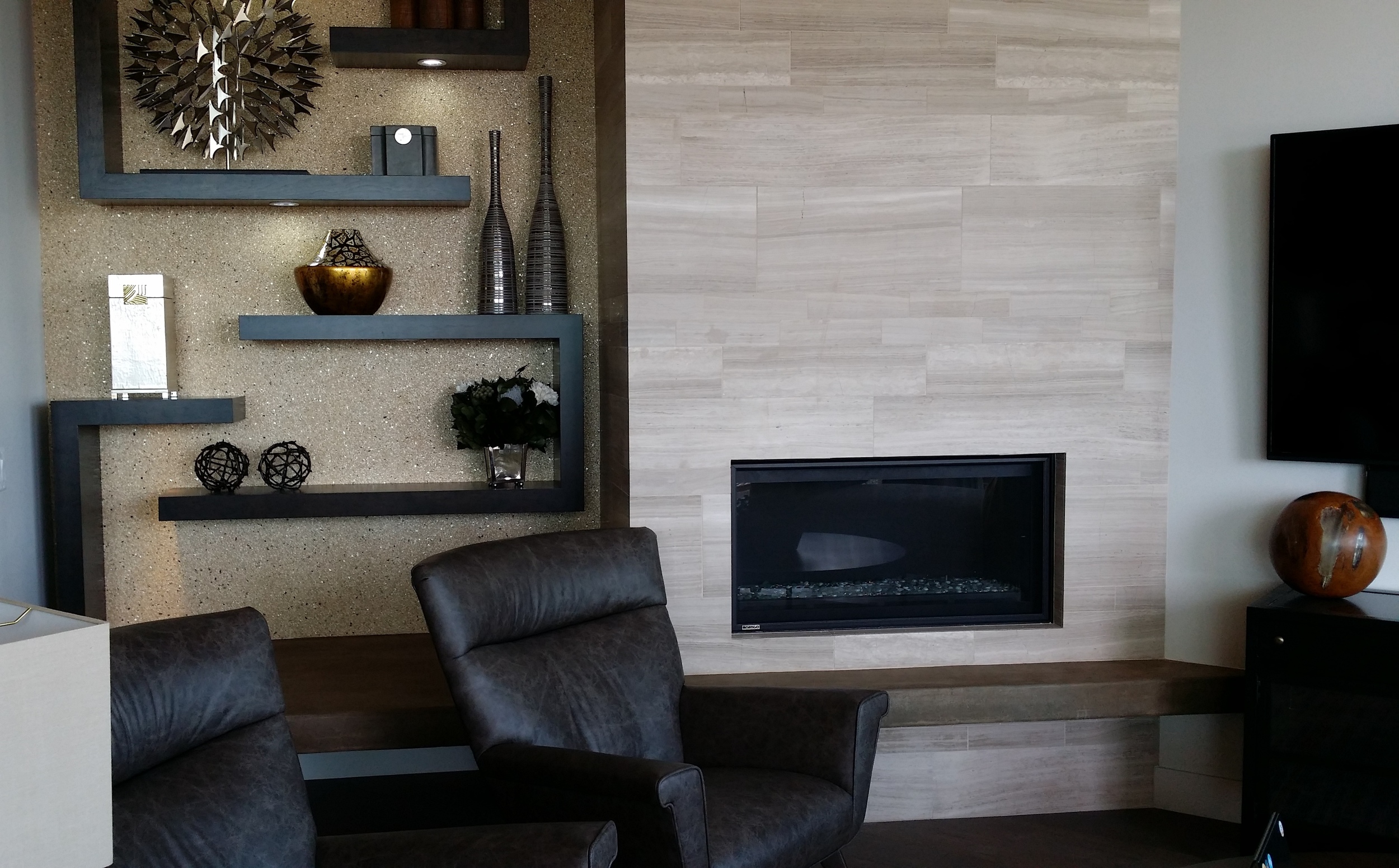



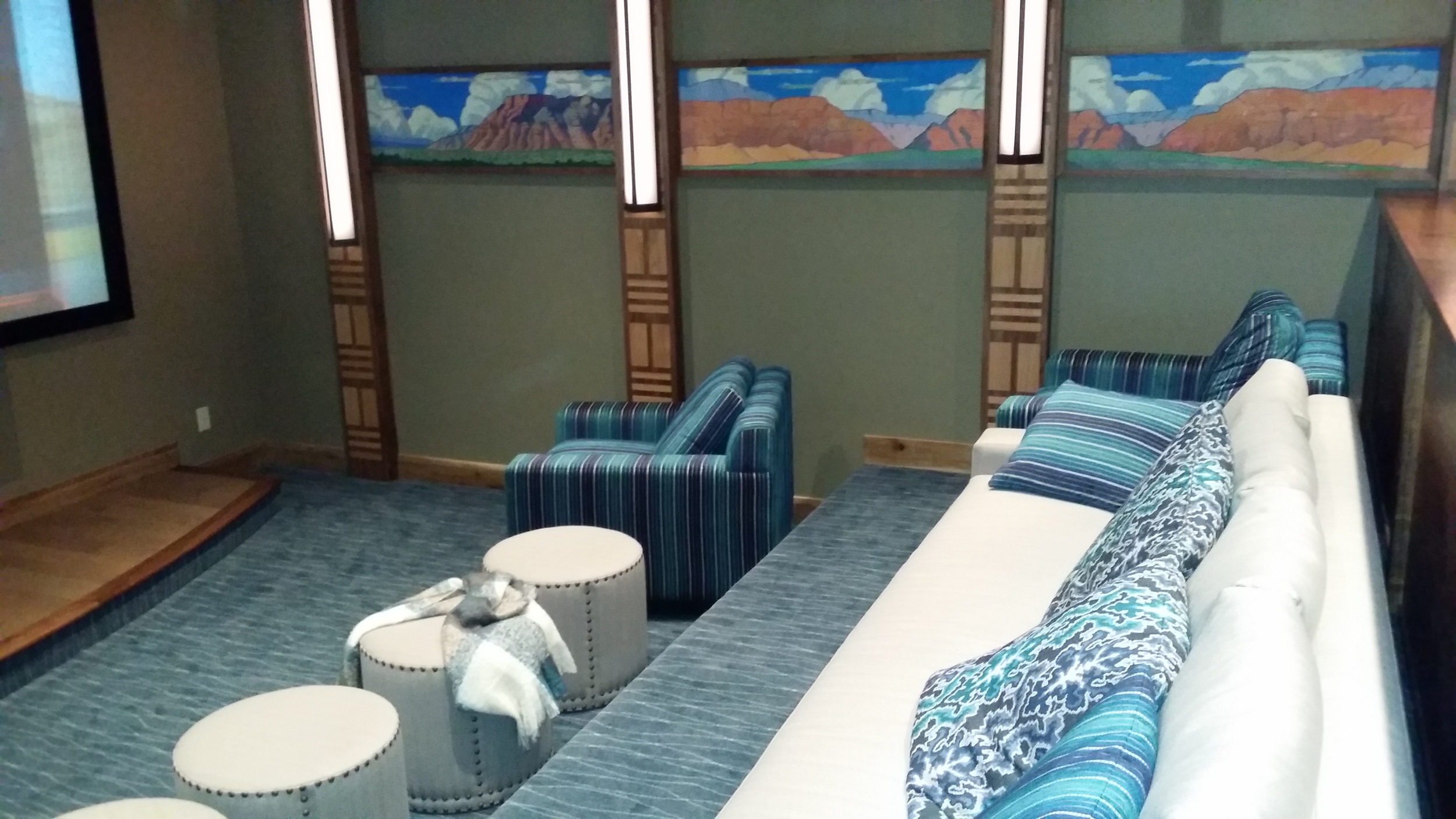

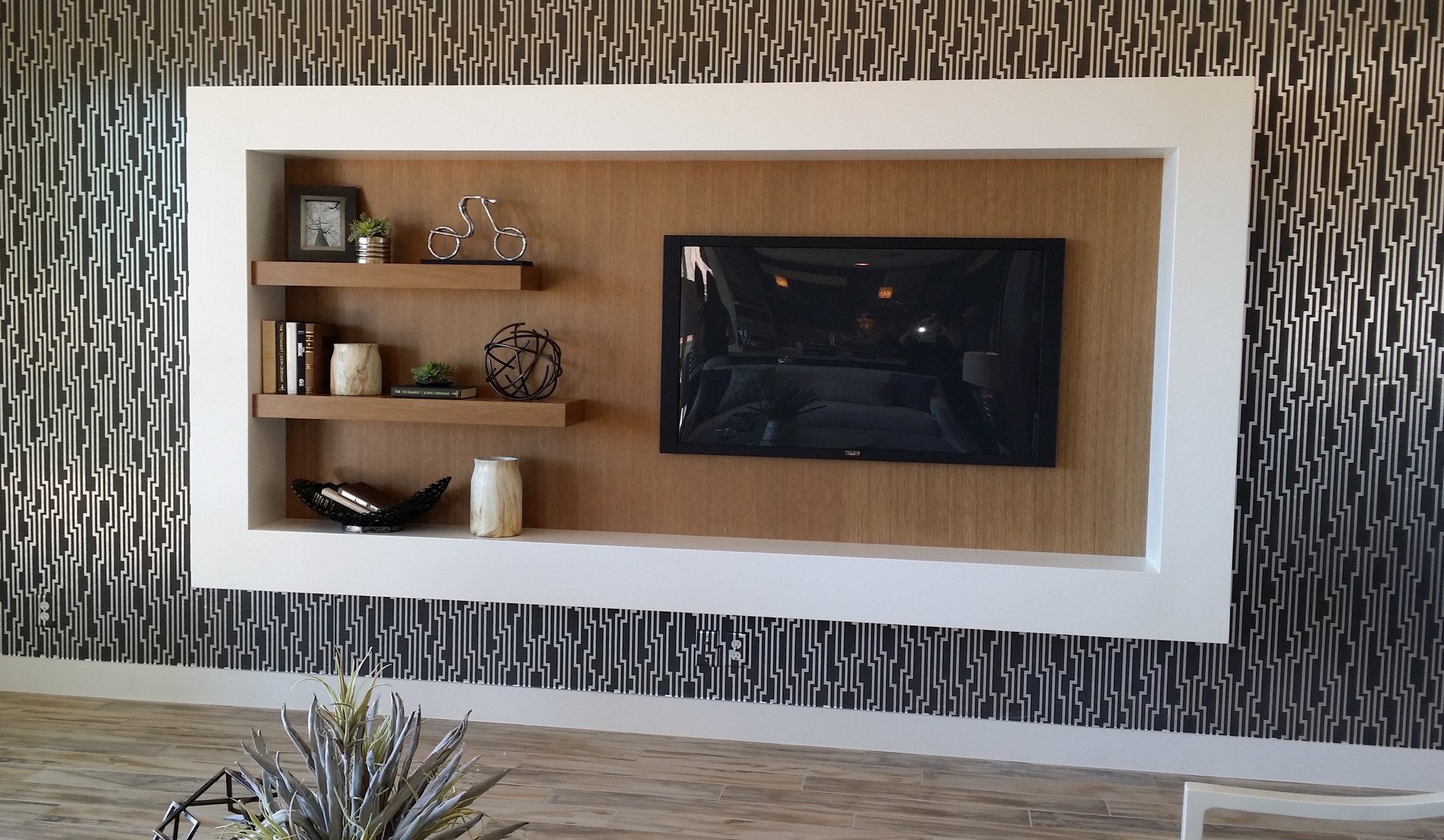






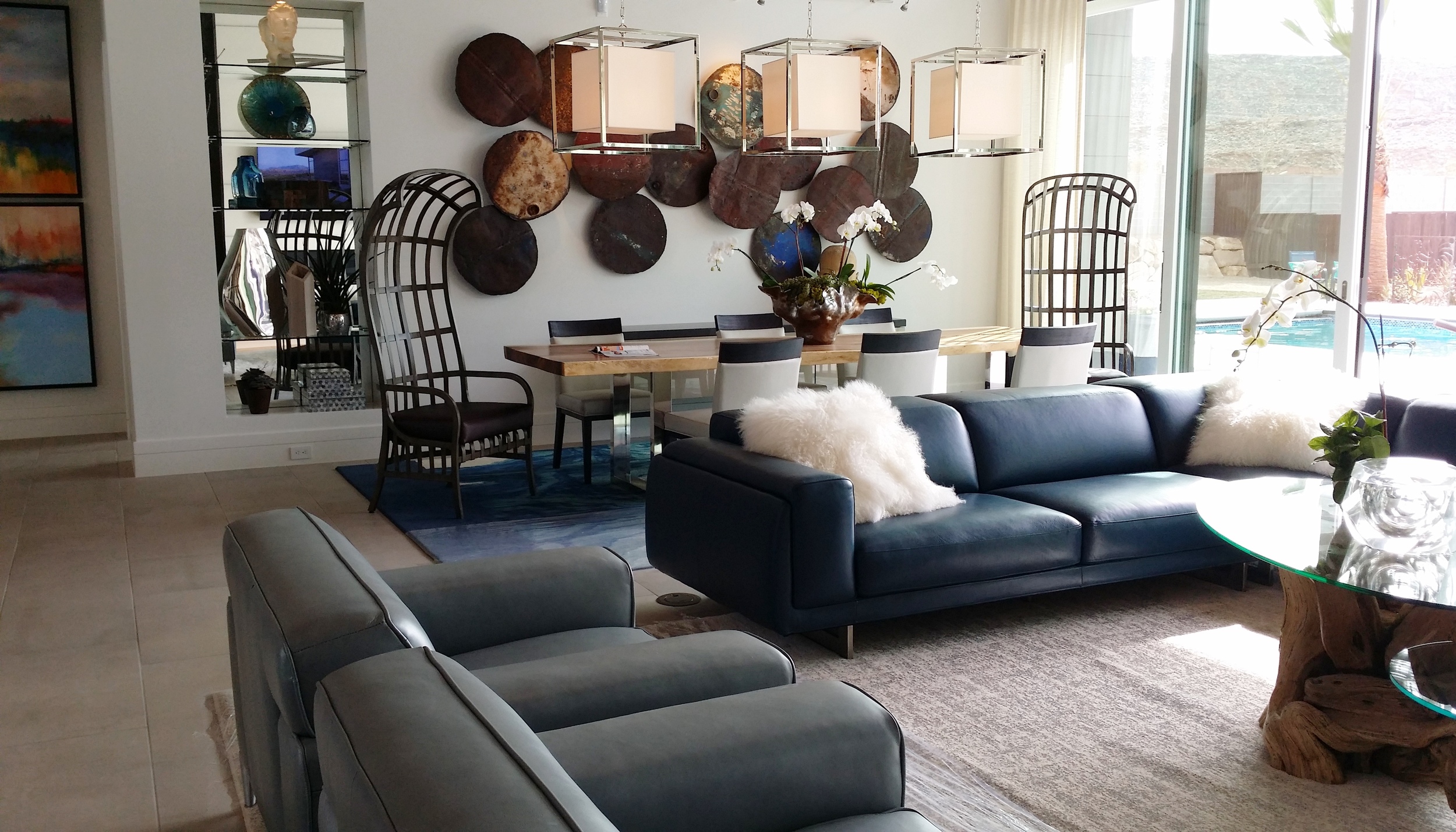
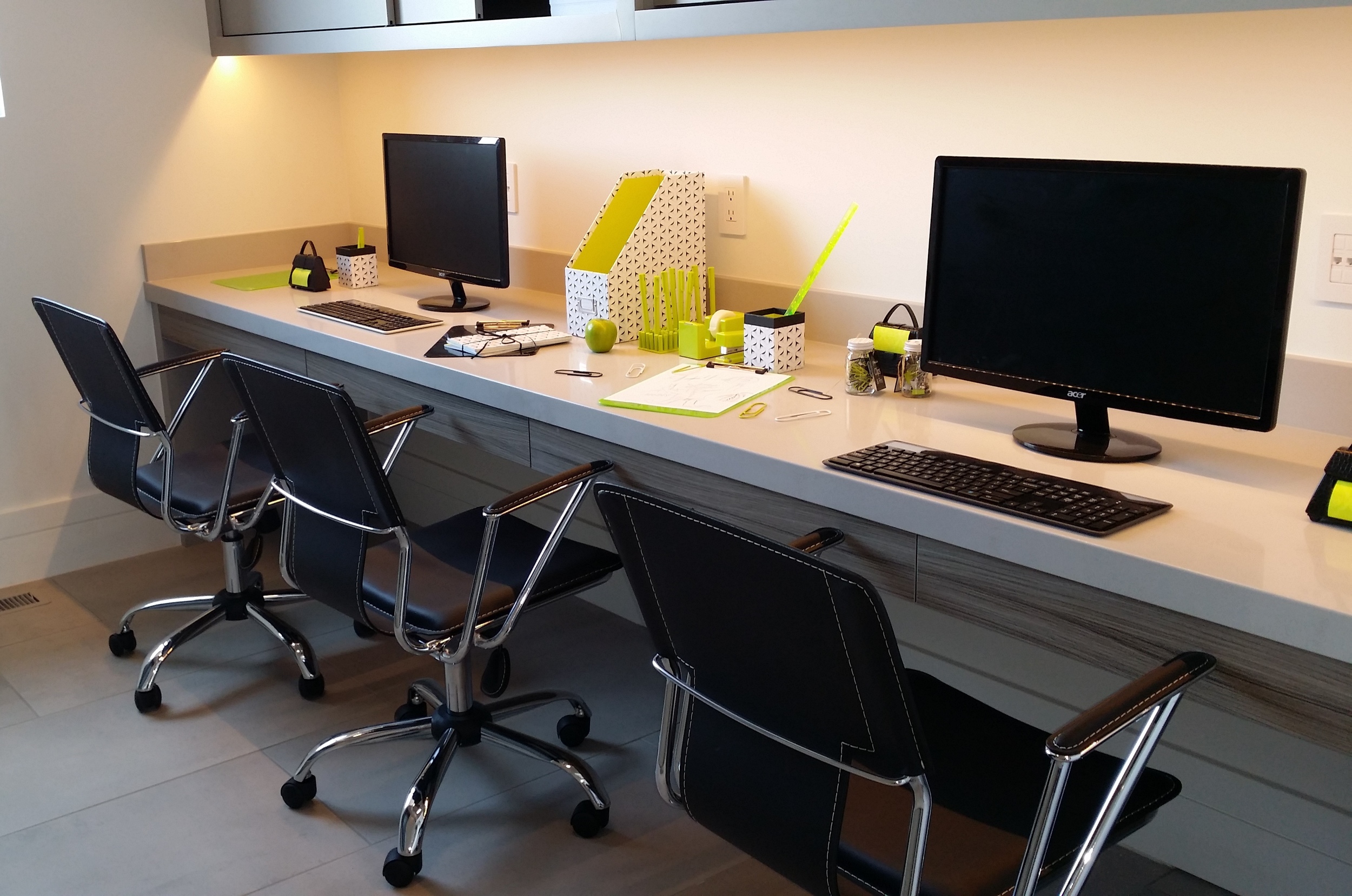








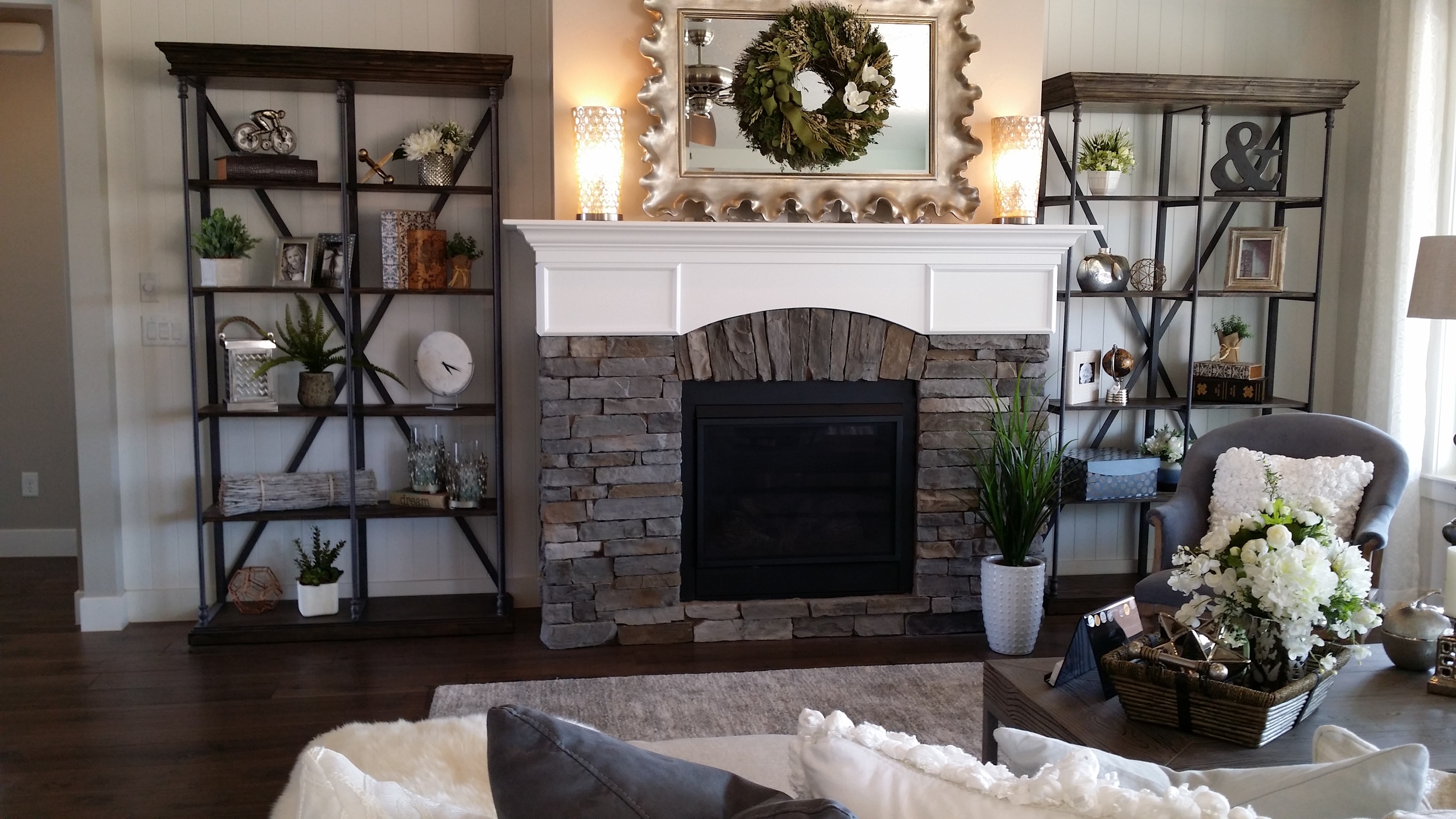
Each year the Southern Utah Home Builders Association presents the St. George Parade of Homes...an extravaganza of custom homes and interior design ideas. Here are some of our favorite images from this year's Parade.


























20 fireplaces we could really warm up to....









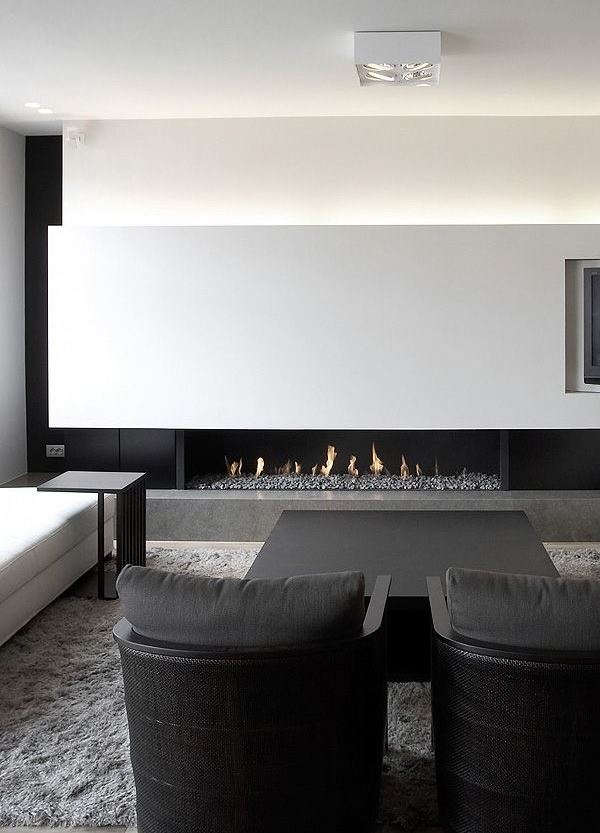









The Greek Key design has its origins in ancient Greece and is their most important symbol. During the medieval period, the key form was used in many ancient Greek temples, primarily due to their interest in labyrinths.
This motif is also called Meandros or the Hellenic Key, after the Meander River which was twisty and doubled onto itself, giving a symbolic meaning to the key of the eternal flow of life.
The graphic Greek Key design can be used in both modern and classical interiors. There are numerous products which incorporate this timeless design…you will find it embellishing furniture, rugs, lamps, mirrors, and fabrics.












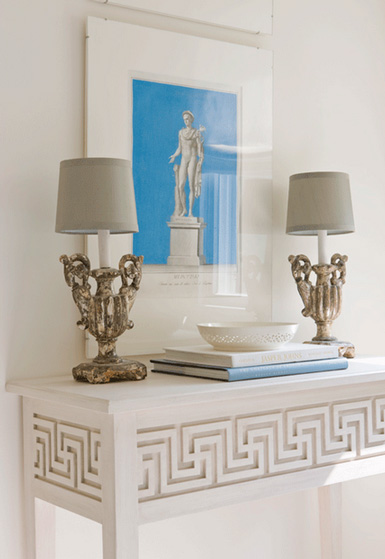


Unlike today’s temporary contemporary construction, homes in Ancient Greece were built to last - in fact, some are still occupied to this day. Stone building materials were used on both palaces and whitewashed cliff dwellings. Regardless of the home’s size, interior design in Ancient Greece centered around the family’s hearth. Even back then, the open concept was popular!
When crafting furniture, artisans followed Egyptian design lines, and the materials used did not differ much either from those used by Egyptians. Greek carpenters added ornamentation to furniture with copper, bronze, and iron embellishments, and wood veneer trim.
The backless stool was the most common form of Greek seating. Easily portable, they also were created in a folding variety, with plain straight or curved legs that typically ended in animal feet. Couches were also used in Greece as early as the late seventh century. These were rectangular in shape and supported on four legs, two of which were longer than the other, creating support for an armrest or headboard.
Homes were not cluttered with excessive furniture, and what there was were simply designed and utilitarian, although beautifully made. Persian design had strong influences on Greek interiors – those who could afford it used colorful Persian tapestries and rugs to adorn their walls.
To mimic this style in your home try these Grecian formulas:
1. Bright, whitewashed stucco walls with gently rounded arches, wood paneled beam ceilings, and bright blue shutters and doors
2. Mosaic tile in Greek motifs on bathroom walls, floors, and shower stalls
3. Crisp white bed linens with a Greek key border
4. Backless stools as seating around a simple wood slab dining table
5. Scour architectural salvage companies for sculpted Doric or Corinthian columns, or find reproductions made of plaster or lightweight material
6. Low white sofas combined with simple wood tables
7. Chairs with woven rush seats
8. Blue and white striped area rug
9. Add a reproduction Greek amphora or two to complete your style
Make the most of your outdoor space with furniture that complements your favorite open-air activities. Consider these things before buying your outdoor furniture:
There are four main types of furniture to consider: wood, metal, wicker, and recycled plastic. This guide describes the advantages of each and what to look for.
WOOD
Everything from simple pine to luxurious teak is used to manufacture wood patio furniture. Dissimilar types of wood perform very differently and you should always take this into consideration if you are contemplating the purchase of wood patio furniture. Softer woods (those products harvested from needle-bearing trees) are going to weather quickly and will require annual maintenance. Harder wood (those harvested from broad leaf trees) will last longer and not require as much attention.
If your wood patio furniture will be in a sun room or covered area, this isn’t an issue. Soft woods such as pine, cypress, and redwood will be fine. However, if you plan to use your wooden furniture where it will be exposed to the elements, you should shop for a hardwood. These are traditionally Brazilian Cherry, Jarrah, and Teak.
Teak furniture tends to be the most expensive to purchase, however it may be worth the extra dollars. Teak is one of the hardest woods available, which means it is impervious to insect damage. It won’t rot or splinter, and it requires no special treatment if it is going to be exposed to rain and sun. New teak has a rich, buttery honey colour and will maintain this look if you simply apply linseed oil to it once or twice a year. If left alone, teak will weather to a silvery grey finish.
METAL
Metals commonly used for outdoor furniture are aluminum, iron, and steel. Wrought iron and steel furniture are basically the same; wrought iron is a low carbon form of steel. Both tend to be budget-friendly, though high end, designer wrought iron furniture is also available. As both types take abuse very well, they should survive heavy usage. This furniture is weighty and perfect for windy locations.
Modern manufacturing techniques include a zinc wash to inhibit the formation of rust, eliminating concern and objection to this material. If rust does occur, you can simply sand and spray paint the affected area and it will be as good as new. Slight rusting does not compromise the integrity of the frames.
Cast aluminum furniture is made by pouring molten aluminum into molds of different shapes that are then assembled to create the furniture, resulting in a beautiful, heavy, weather-resistant product. Cast aluminum is very durable and requires very little maintenance, making it extremely popular for all budgets. It has no rust issues and being a heavy material it is perfect for areas where wind is a concern.
Extruded aluminum is generally combined with “sling” fabric to produce maintenance free, comfortable outdoor seating. Extrusion is the process of shaping material by forcing it through a die. The shapes are combined to created frames for chairs and tables, resulting in a lighter less cumbersome frame than cast aluminum that still maintains the weather resistant properties.
Cast aluminum and extruded aluminum elements can often be found in the same furniture
WICKER
Having undergone a revolution in the past several years, wicker and rattan furniture can be found in its traditional form, as well as the newer, popular synthetic option. Available in classic weaves and styles; it is also manufactured in a wide variety of modern weaves and styles, thus having the ability to be implemented into any décor.
Traditional wicker is usually rattan, but may be woven of other natural materials. Suitable for indoor or covered areas, it will weather and require some care if it is exposed to the elements. Synthetic wicker is impervious to weather and can be used in any location, requiring no special maintenance.
RECYCLED PLASTIC/POLYMER/RESIN
If “green” living is your goal, poly lumber is the perfect option for being eco-friendly. Manufactured from recycled plastics it is designed to mimic wood, and in fact, is cut and assembled the same way. As well as being eco-friendly, it is weather-friendly – treated with UV inhibitors so it will not splinter or rot. This material is heavy enough for high wind areas, and will last a very long time.
Resin or plastic furniture has many advantages which include low cost, ease of maintenance, and portability. Unfortunately this same portability factor will have you chasing your pieces across the yard during a storm.
Demand for stylish outdoor furniture has inspired new designer looks at affordable prices, in contemporary lines and bold colours, all at affordable prices.
Whether you are designing a small or large outdoor space, there are several design elements to consider. Though you may not be able to utilize all of these elements, incorporating one or more can really boost the appeal of your outdoor design.
By using a variety of seating options, you can create a flexible arrangement that can be moved according to the event. Extra chairs can be pulled up to a dining table, or scattered around a conversational area. Small stools are easily arranged, and like other outdoor furnishings they can be made from a choice of materials – upholstered, wood, metal, or even ceramic. Built-in seating can do double duty as a way to delineate space.
By combining hardscape materials with planted or potted shrubs and trees, you can create a flow through your space and delineate areas with intent – separating dining, relaxing, and fun zones. Paths curving through your outdoor space will add a sense of discovery. Explore the many options available for hardscaping for inspiration – decking, rocks, pavers, etc.
If space and budget permit, an outdoor fireplace or fire pit can really make your yard sizzle. An added element of fire transforms the outdoors into a cozy and inviting space. Gathering around an outdoor fire source is great on a chilly evening, and makes the perfect place to toast marshmallows!!
Just like designing an indoor space, creating a focal point applies to outdoor rooms as well. Anchoring a well-placed arrangement of furniture around one element will provide a cohesive, inviting solution. Painting an exterior wall with an accent colour is a fun way to create a focal point. Add some ‘outdoor proof’ art or wall décor to further establish your focal point.
Water features, sculptures, and flea market finds can be added to give your outdoor space visual appeal. For smaller yards or balconies, or to delineate a space, containers of all shapes and sizes can be planted with seasonal colours. Lightweight pots can be easily moved to make rearrangement less of a chore. Outdoor area rugs can be used to create different zones in your space.
Occasionally limited space makes it essential that furnishings do double duty. Benches and tables can have storage underneath, shelves and hooks can be installed on a wall to hang towels or garden tools. An outdoor kitchen can make repeated trips into the house unnecessary. Along with the traditional grill, a small refrigerator, prep area, and sink can make cooking outdoors a pleasure instead of a chore.
While neutral tones may look nice indoors, outdoors they will blend into the background, so don’t be afraid to use colour. Dark colours in direct sunlight will absorb and retain heat – so although stylish, they may not be practical in very warm climates. It’s easy to update your outdoor room with accent pillows, slipcovers, and umbrellas which are all available in a vast array of colours and patterns. Be sure to select fabrics designed for outdoor use for areas that are exposed to the elements.
To really bring the indoors out, establishing a sense of an enclosure will provide a feeling of purpose to a space. Pergolas are a popular solution, providing filtered sunlight while creating a ‘roof’ to the space. Outdoor draperies can be added for additional mood enhancement and privacy.
After the sun goes down, good landscape lighting can accent your home and garden...transforming your yard into a magical place while making the space safer at night. For a soft, cozy glow use a combination of electric and natural sources for your lighting needs…candles and lanterns are great on tables, and torches can create an island vibe. Small white Christmas lights are fantastic year round when strung throughout surrounding shrubbery and trees.
Versatile yet simple furnishings are essential for island décor. Classic rattan and retro patterned fabrics can add a hip vibe to beach interiors. Slipcovers made of natural muslin, cotton, or denim fabrics will provide the perfect backdrop against splashes of brightly coloured fabric and accents in motifs associated with the casual and relaxed style of the Caribbean.
Inspired by nature, colour schemes for simple island elegance can range from ocean blues and palm frond greens, to vivid pink, yellow, and orange for the perfect tropical punch. Contrasting these vibrant hues with natural textural materials such as grass cloth, wicker, rattan, bamboo, teak, woven blinds, shells, and driftwood produces the perfect balance for your space. Successful use of pattern comes with combining them with understated elements for your island inspired rooms.
If your location is a truly tropical one, consider using outdoor fabrics for indoor rooms to keep mold and mildew at bay. These highly durable fabrics can be more costly initially than their indoor counterparts, but their resistance to sunlight and humidity offers substantial savings in the long run, as they will not require frequent replacement.
Caribbean island style has many influences from other cultures – French, Spanish, African, Dutch and English – all blending into a unique rainbow evident in their music, cuisine, and decor. Caribbean natives maintain a laid back approach to life, and infusing this style into your own home will make you feel like you can stay on vacation forever….you can almost feel the warm, balmy breeze and pink sand between your toes and hear the faint rhythmical beat of a calypso drum.
Although there is a vast difference between the way the peasants and the wealthy furnished their spaces, burial rituals of Pharaohs, Queens, and other wealthy Egyptians have allowed artifacts to be extraordinarily well preserved and studied in museums worldwide.
Most ordinary Egyptian homes were sparsely furnished, and the furnishings they possessed were simple and functional, the most common being a three or four legged low stool. Due to wood being expensive, the lower classes had chests and baskets made of reeds to store their belongings. Tables were not normally used – people squatted on the floor using a wooden board to write on. Meal preparation was also done on the floor, and those who did not use the low stools sat on the ground atop reed mats and pillows. Beds were mattresses constructed of straw, wool, and reed mats.
It was a far different story for the nobility whose homes contained high quality pieces crafted by artisans. Although the stools were still utilized, they were much nicer with seats of animal skins, woven leather strips, or plant materials – some were painted and carved as well. This early culture even invented the folding stool, an example of which was found in the tomb of Tutankhamen.
Elaborate carvings with inlays of gold and ivory on other seating pieces were common amongst the royal families. Tables were used by the upper echelon for dining, gaming, and shrines. Storage chests used by the rich were very ornate – embellished with paintings or inlays depicting scenes.
Using stylized art forms from this civilization, artisans created magnificent paintings, wall murals, sculptures, and pottery –often depicting beliefs and offering a glimpse into the life that existed during this time in history.
Designers today still reference the styles used in Ancient Egypt, as their advanced culture continues to mesmerize even now.
We hope you enjoy our new series exploring design through history and how these timeless styles are interpreted in the modern world. First up....Prehistoric
That was then.....
This is now....
Life in Prehistoric times brought new meaning to the term “minimalistic”. Nomadic societies needed to be able to move their belongings from place to place - so the necessities were of utmost importance, such as stools for seating and storage for food items and clothing. Decorative elements were secondary, though evident, and offered function as well as style.
Pottery crafted from clay, gourds, or carved wood were used to carry food and water. Baskets made from woven sticks and reeds also served transportation requirements. From various archaeological excavations, discoveries of artifacts have included gaming dice, jewelry, and objects carved from stone, possibly used in rituals.
Original art was evident on cave walls – very common during the prehistoric era. So many of these delicate works made from rubbing charcoal or stone, and blood or droppings have amazingly survived the elements over time.
One of the best preserved villages was discovered in 1850 following a wild storm in the northern Europe location known as Skara Brae. Inhabited before Egyptian pyramids were constructed, it is some 5,000 years old, yet the semi-subterranean village is remarkably preserved.
Built from closely fitted flat sandstone slabs and linked by covered passages, each house consists of a single room with fitted stone furniture – dresser, two beds, centrally located hearth, and small floor tanks presumably used for preparation of fish bait.
A contemporary interpretation of prehistoric life is found in the late Dick Clark’s “Flintstone” residence. Built on 23 acres in the Malibu Hills, this 2,500 square foot home consists of one bedroom and two bathrooms, and is designed with irregular shapes and stone colours.
Simplistic designs for furnishings and accessories are still incorporated into modern products and interiors evoking a super stylish “form follows function” interpretation.
Like a time capsule from the 60’s, the award-winning set of the hit television series ‘Mad Men’ showcases some heavenly mid-century iconic furniture and design motifs.
Sit back with your cigarette and martini, and enjoy a peek of the set’s still photos of an era gone by. From the Draper’s penthouse on Park Avenue, to the offices of Sterling Cooper & Partners, to Megan’s West Coast bungalow, the set designers and decorators don’t miss a detail.
Check out our STYLE FILE: PARK AVENUE PENTHOUSE for products with that strictly uptown Manhattan vibe.
Source: Interior Design magazine
Photography by Eric Laignel
Just released images from the 2014 Kips Bay Decorator Show House. All photography is by Will Femia.
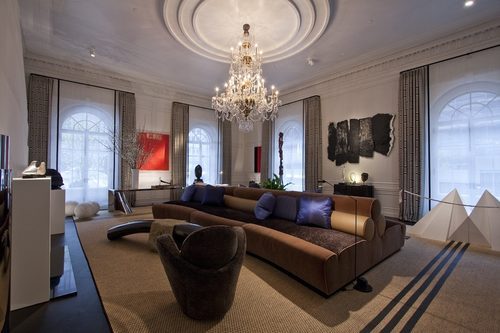




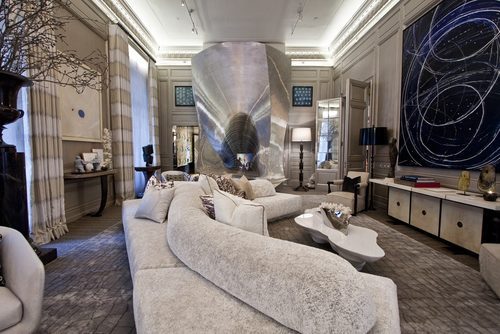




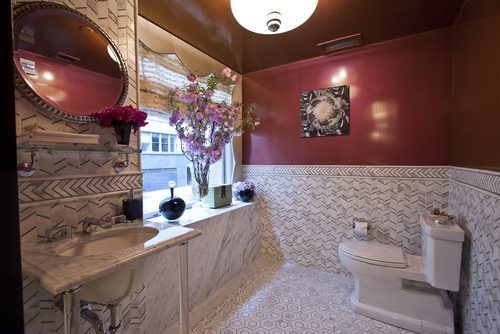














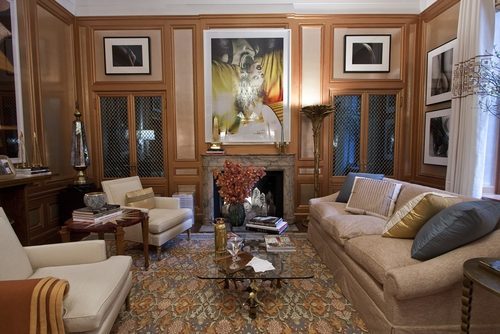
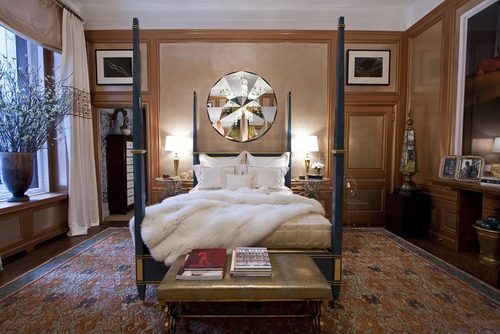
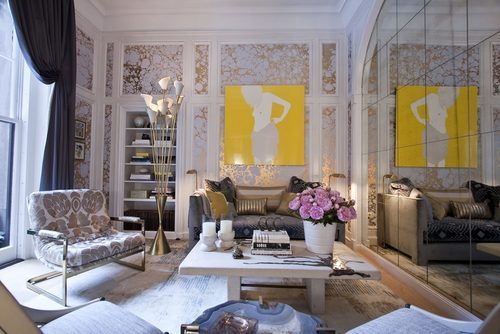



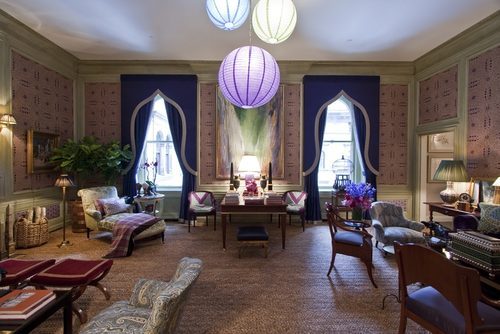










The mother of all show houses is now open in New York…the 42nd Annual Kips Bay Decorator Show House 2014. This year top designers have transformed and revived The Villard Mansion on Madison. Adjacent via a grand courtyard to the luxury hotel The New York Palace, this gilded-era mansion is situated in the most luxurious shopping district in the heart of Manhattan.
An icon of old New York, the building was designed and constructed in 1884 on the Southeast corner of 51st Street and Madison Avenue, and renovated in 2011. Architectural details within the six-story and 26,190 square- foot space include a grand staircase, 16-foot high ceilings, several Italian marble fireplaces, marble floored hallways, and a carved panel room with barrel-vaulted ceilings.
Proceeds from the Decorator Show House benefit the Kips Bay Boys and Girls Club which helps more than 11,000 youth ages 6-18 in ten locations throughout the Bronx with after-school and enrichment programs.
Open May 1 through May 29 – it’s sure to be a must see event if you are in, near, or visiting the New York area. It’s a worthy cause, and a wealth of beauty to behold and ideas be inspired by.